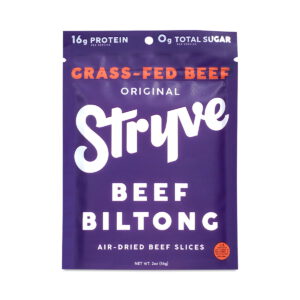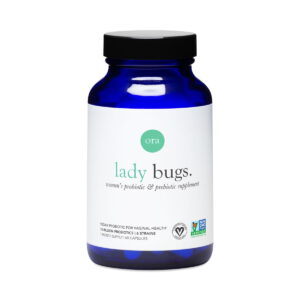- Effective Strategies for Curbing Cravings
- Understanding the Science of Cravings
- Planning Healthy Snacks Ahead of Time
- Staying Hydrated to Control Hunger
- Mindful Eating Practices
- Incorporating Physical Activity into Your Day
Grocery shopping doesn’t have to be a daunting task, especially when your goal is to manage cravings and make healthy choices amidst a busy day. Whether you’re stocking up for the week or doing a quick run, here are some entertaining tips to spruce up your grocery experience.
First, take advantage of your local farmers’ markets. Not only can you find fresh, organic fruits and vegetables, but you also support local farmers and reduce your carbon footprint. When you buy in-season produce, you not only enjoy better flavor but often lower prices too. Check out LocalHarvest to find markets in your area.
For a quick and healthy snack option, consider picking up some nuts and seeds. Look for unsalted and organic varieties when possible. Almonds, walnuts, pumpkin seeds, and sunflower seeds are all great choices that can curb your hunger and help keep your energy up during the day.
When considering vegan options, don’t shy away from plant-based protein sources. Explore aisles for legumes, lentils, and chickpeas, which are not only budget-friendly but also versatile enough to fit any meal. Incorporating these into salads or stir-frys can make for a wholesome and satisfying meal. Frozen fruits and vegetables are excellent as well; they’re often picked at their peak and flash-frozen, retaining their nutrients and flavor.
For those who are fitness enthusiasts, stocking up on whole grains like quinoa, brown rice, and oats can provide the fuel you need for your workouts. Look for bulk bins in your grocery stores to save money and reduce packaging waste.
Safety is paramount when grocery shopping, whether online or in-store. Always check expiration dates on perishable items and avoid buying anything that looks overly ripe or damaged. If shopping online, ensure the website is secure and reliable. Reading customer reviews and checking for certifications can help you make informed choices. Websites like Consumer Reports provide insight into the credibility of online grocery shops.
Create a grocery list tailored to your meals for the week. This ensures you’ll only buy items that fit into your plan, keeping you focused and minimizing impulse purchases. It takes a little prep work but pays off by streamlining your shopping experience. Remember, the more organized you are, the more efficient your grocery trips will be, allowing you more time to enjoy your busy day!
Understanding the Science of Cravings
Understanding cravings involves a multifaceted approach that takes into account biological, psychological, and environmental factors. At the core, cravings are often stimulated by a complex interplay of hormones, neurotransmitters, and psychological triggers. When we experience hunger, our bodies release ghrelin, known as the “hunger hormone,” which signals our brain that it’s time to eat. Conversely, when we consume food, the body produces leptin, which signals satiety. This hormonal dance can easily be disrupted during a busy day, leading to intense cravings for high-calorie, sugar-laden foods that provide quick energy.
In addition to hormonal influences, our brains play a crucial role in cravings. The reward pathways in our brain, specifically involving neurotransmitters such as dopamine, react strongly to foods that are high in sugar and fat. When we eat these types of foods, our brain releases dopamine, creating a feeling of pleasure and reinforcing the desire to eat similar foods again. This creates a potential cycle where unhealthy eating habits are established, making it challenging to manage cravings effectively.
Psychological factors also contribute significantly to cravings. Stress, anxiety, or emotional challenges can trigger cravings as individuals often seek comfort foods during difficult times. The psychological association between certain foods and emotional states can lead to habitual cravings that may not necessarily be linked to physical hunger. Recognizing these triggers is vital in the journey toward healthier choices.
Another impactful aspect of cravings is the environment. Busy lifestyles often necessitate quick meals or snacks, leading to reliance on processed and convenience foods that are typically high in sugars and unhealthy fats. Creating a supportive environment with healthy options readily available can greatly influence one’s ability to manage cravings.
The following table highlights the differences between typical cravings and healthier alternatives, showcasing how one can make mindful choices that satisfy cravings without compromising health:
| Typical Cravings | Healthier Alternatives |
|---|---|
| Chips | Air-popped popcorn |
| Chocolate bars | Dark chocolate (70% cocoa or higher) |
| Ice cream | Frozen yogurt or homemade banana ice cream |
| Cookies | Oatmeal with nuts and dried fruit |
| Soda | Sparkling water with a splash of lemon or lime |
By understanding the science behind cravings, individuals can develop strategies to better manage cravings during busy days. Recognizing the physiological and psychological factors at play enables the creation of an environment that promotes healthier choices and ultimately leads to long-term success in managing cravings.
Planning Healthy Snacks Ahead of Time

Planning ahead is essential when it comes to managing cravings throughout your busy day. One of the most effective strategies is to prepare healthy snacks in advance. Begin your grocery shopping by prioritizing snacks that are both nutritious and convenient, ensuring that you’re never caught without an option.
Think about incorporating a variety of snacks that cater to different tastes and dietary preferences:
- Fruits and Vegetables: Stock up on fresh or pre-sliced fruits and vegetables. Apples, berries, carrots, and bell peppers are excellent choices. Pair them with hummus or a homemade yogurt dip for an added flavor boost.
- Nuts and Nut Butters: Choose a selection of unsalted nuts such as almonds and cashews. Nut butters like almond or peanut make great spreads on whole-grain crackers or fruit slices and are rich in protein to keep you satisfied.
- Homemade Trail Mix: Create your own trail mix using a blend of dried fruits, nuts, and seeds. This mix not only satisfies cravings but also provides a quick energy boost, perfect for an on-the-go option.
- Whole-Grain Snacks: Look for whole-grain crackers or rice cakes to munch on. Top them with avocado or a nut butter for a filling snack that keeps you fuller for longer.
- Vegan Protein Options: If you’re looking for vegan-friendly snacks, consider roasted chickpeas or edamame. They are high in protein and fiber, making them an ideal solution for cravings without sacrificing your dietary preferences.
When shopping for these snacks, prioritize organic and locally sourced items whenever possible to enhance your meal quality. Don’t forget to check the ingredient lists for added sugars and preservatives, particularly in pre-packaged snacks.
For budget-conscious shoppers, explore bulk bins for nuts, grains, and dried fruits, allowing you to only purchase what you need while saving money. Additionally, taking the time to compare prices and opt for store brands can add substantial savings to your grocery bill without sacrificing quality.
With the rise of online grocery shopping, remember to choose reputable retailers. Look for reviews and ratings on quality to ensure you’re getting fresh products. If buying perishables like fruits and vegetables online, consider their return policy and whether they offer guarantees on freshness.
To streamline your snack preparation process, create a weekly menu that includes healthy snacks. Set aside one day for prepping—wash, cut, and portion. By doing so, you’ll have grab-and-go options ready, making it easier to stick to healthy choices and manage cravings effectively during your busy day.
Invest in reusable storage containers to keep your snacks fresh and organized. Having everything within reach reduces the temptation to grab unhealthy options when hunger strikes.
Staying Hydrated to Control Hunger
Staying hydrated throughout the day is often overlooked as a critical strategy for managing cravings. Many people don’t realize that dehydration can mimic feelings of hunger, leading to unnecessary snacking or cravings for unhealthy foods. When your body is properly hydrated, it functions optimally, and your hunger signals become clearer, helping you distinguish between actual hunger and thirst.
A good practice is to begin your day with a glass of water before breakfast. This not only kickstarts your metabolism but also sets a positive tone for hydration throughout the day. Carrying a reusable water bottle can encourage you to sip water regularly, making it easier to meet your hydration goals while navigating a busy schedule. Aim to drink water consistently rather than waiting until you feel thirsty, as thirst can often indicate that you are already dehydrated.
Incorporating hydrating foods into your diet is another effective way to stay hydrated. Fruits and vegetables like cucumbers, oranges, strawberries, and watermelon have high water content and also provide essential nutrients. Snacking on these foods can not only satisfy cravings but also contribute to your hydration levels.
It’s also beneficial to set reminders throughout the day to take a break and drink water. This can help you avoid the temptation to reach for snacks when your body is actually signaling for hydration. If plain water feels monotonous, experiment with adding slices of lemon, cucumber, or fresh herbs like mint for a refreshing twist without added calories.
Hydration can also play a role in your energy levels. When you are adequately hydrated, you are likely to feel more alert and energized, reducing the likelihood of emotional eating triggered by fatigue. Conversely, dehydration can lead to feelings of lethargy, prompting a search for quick source of energy in the form of high-calorie snacks.
Additionally, consider integrating herbal teas or flavored water alternatives, which can provide a change in flavor while ensuring you stay hydrated. These options can be particularly satisfying and may curb cravings for sugary beverages, making them a healthier choice.
“Water is the most precious gift that nature can give to the people.” — Nomadic Proverb
Emphasizing hydration as part of your daily routine not only aids in managing cravings but promotes a healthier lifestyle overall. By being conscious of your hydration levels and understanding its importance, you can better navigate your busy day and make healthier choices that support your goals.
Mindful Eating Practices
 Mindful eating is a crucial strategy in managing cravings effectively throughout a busy day. It revolves around the practice of being fully present during meals, allowing individuals to savor each bite, appreciate the flavors, and recognize their body’s signals of hunger and fullness. By cultivating mindfulness while eating, you enhance your awareness of how different foods affect your body and mood, paving the way for healthier choices.
Mindful eating is a crucial strategy in managing cravings effectively throughout a busy day. It revolves around the practice of being fully present during meals, allowing individuals to savor each bite, appreciate the flavors, and recognize their body’s signals of hunger and fullness. By cultivating mindfulness while eating, you enhance your awareness of how different foods affect your body and mood, paving the way for healthier choices.
One practical approach to mindful eating begins with reducing distractions. In our fast-paced lives, it’s all too easy to eat on the go or while multitasking, such as watching TV or scrolling through social media. To counter this, designate specific times to enjoy your meals without distractions. A quiet moment to focus solely on your food can amplify your enjoyment and attentiveness to portions. Take the time to appreciate the colors, textures, and aromas of your meal, which not only heightens your dining experience but can also help you recognize when you are genuinely satisfied.
Another effective technique involves slow eating. By taking smaller bites and chewing thoroughly, you give your brain the necessary time to process signals of fullness. Research indicates that it takes about 20 minutes for the brain to register satiety, so savoring your meal at a leisurely pace can prevent overeating. Try to engage your senses fully—notice the crunch of raw vegetables, the warmth of hearty grains, or the creaminess of a yogurt dip. This mindful engagement with food can help curb cravings throughout your busy day.
Incorporating gratitude into your meals further enhances mindful eating. Taking a moment to appreciate where the food comes from, the effort that went into preparing it, and the nourishment it provides can shift your mindset. This practice adds a deeper meaning to eating, fostering a more positive relationship with food. It can also help reduce emotional eating driven by stress or fatigue, which is often a trigger for unhealthy cravings.
Mindful eating can be paired with listening to your body. Note how different foods make you feel, both physically and emotionally. Keeping a food journal where you record your meals and feelings may reveal patterns that prompt cravings. When you understand how certain foods impact your energy levels and mood, you’ll be better equipped to make choices that align with your health goals.
Embrace mindful eating as an intentional act that prioritizes well-being amidst a busy schedule. This approach not only helps manage cravings but empowers you to choose foods that nourish your body and mind, creating a fulfilling and health-conscious lifestyle.
- What is mindful eating?
- Mindful eating involves paying full attention to the eating experience, including flavors, senses, and bodily cues. It encourages individuals to slow down, savor their food, and make conscious choices rather than eating on autopilot.
- How can mindful eating help with cravings?
- By practicing mindful eating, you become more attuned to your body’s hunger and fullness signals, which can reduce emotional or stress-triggered cravings. This awareness promotes healthier choices and helps prevent overeating.
- Can I practice mindful eating even on a busy day?
- Absolutely! You can incorporate mindful eating techniques into your schedule by setting aside specific times for meals without distractions. Even a few focused moments during a busy day can make a significant difference.
- What are some tips for starting mindful eating?
- Start by reducing distractions during meals, eating more slowly, and truly engaging with your food’s flavors and textures. Consider keeping a food journal to reflect on how different foods affect your state of mind and hunger.
- Does mindful eating require special training?
- No formal training is necessary, but there are resources and programs available that can help guide you. Simply being aware and making a conscious effort to practice mindfulness at meal times is the key.
- How does mindful eating impact long-term health?
- Mindful eating fosters a healthy relationship with food that can lead to improved nutritional choices, weight management, and reduced risks of lifestyle-related diseases. It encourages a holistic approach to well-being.
- Can mindful eating reduce emotional eating?
- Yes, mindfulness can help individuals recognize emotional triggers for eating, enabling them to respond differently to cravings. By understanding their patterns, individuals can develop healthier coping mechanisms.
Incorporating Physical Activity into Your Day
Incorporating physical activity into your day is an excellent strategy to manage cravings and stay energized, even during the busyness of everyday life. Finding time to move doesn’t always require a gym membership or an extensive workout; simple changes can make a world of difference.
First, look for opportunities to add movement throughout your day. This could mean taking the stairs instead of the elevator, parking farther away from the store entrance, or even doing a quick series of stretches while waiting for your coffee to brew. These small bursts of activity can elevate your heart rate and improve your mood, making it easier to resist cravings for unhealthy snacks.
Consider incorporating short, manageable workout sessions into your schedule. For instance, quick workouts such as a 10 to 15-minute HIIT session or a brisk walk during your lunch break can boost your energy levels and help regulate your cravings throughout the day. Many fitness apps and online platforms offer free short workout routines that you can do anywhere, making it easy to squeeze physical activity into your busy schedule.
Don’t forget about the benefits of strength training. Incorporating resistance training into your routine a few times a week can increase muscle mass, which in turn boosts your metabolism even when you’re not exercising. Simple exercises like push-ups, squats, and lunges can be done at home, requiring no fancy equipment.
Group activities provide both social interaction and an opportunity to move. Look for local classes such as dance, yoga, or martial arts. Participating in group fitness can enhance your motivation and accountability, aiding in sustaining healthy choices. You might also find local walking or running clubs that can provide camaraderie and support in meeting health goals.
When scheduling your physical activities, choose a time that fits naturally into your routine. If you’re a morning person, try to work out before your day fully begins. For night owls, look into post-work exercise that can serve as a great way to decompress and manage cravings that can occur after a stressful day. By aligning your physical activity with your personal rhythm, you’ll be more likely to stay consistent.
Finally, if you find it challenging to stay motivated, consider using technology to your advantage. Fitness trackers and smartphone apps can help you log your activities, set goals, and monitor your progress. By viewing your achievements visually, you may find yourself more inspired to continue your efforts toward managing cravings and making healthy choices.
Integrating physical activity into your daily routine can greatly affect your energy levels and cravings. From short bursts of exercise to engaging in social activities, there are plenty of ways to keep moving and support your health goals, even amid a busy schedule.
New Customers Offer!
Free Gift for the new customer
$24 Value, When You Subscrib Visit Thrive Market












